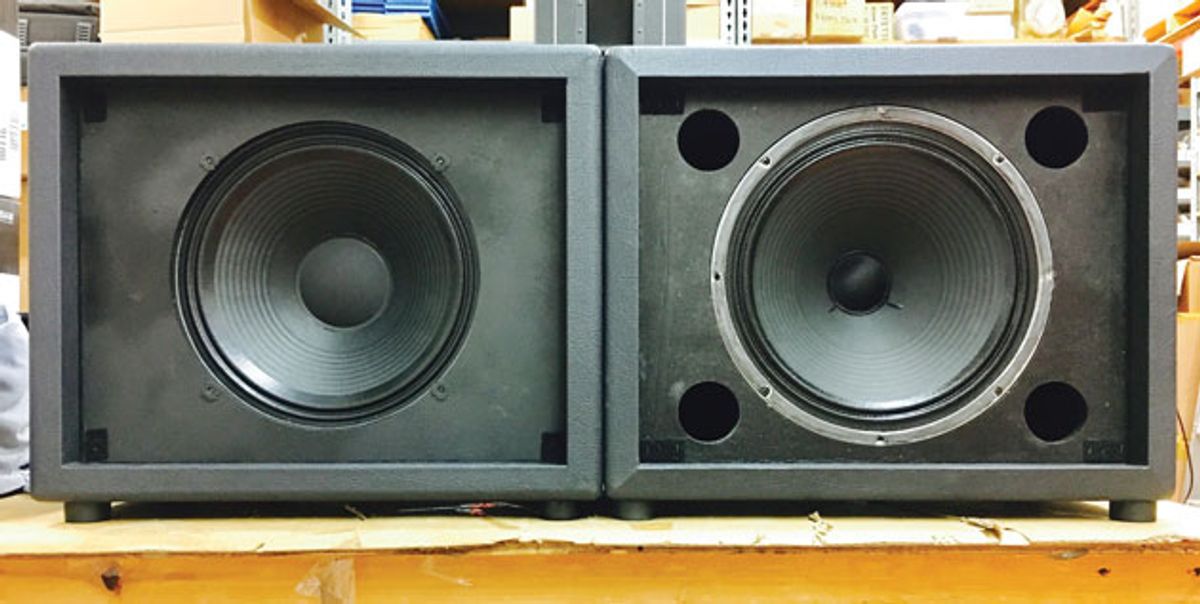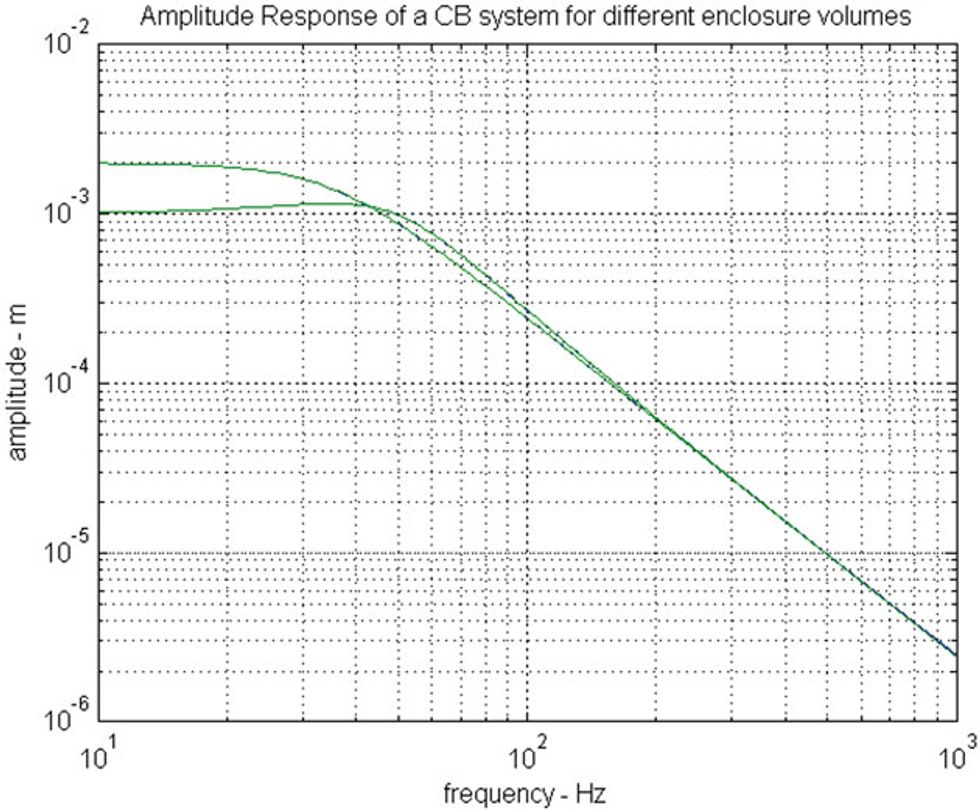
How speakers are housed, and whether they’re used alone or in multiples, has a major effect on their performance. Here are some basic principles to consider as you build your rig.
In my previous installment on speaker graphs [“Why Graphs Matter and When They Don’t”], I promised to expand on how the special reactive relationship between a speaker and a tube power amp is influenced by the size, shape, and resonant qualities of the speaker cabinet itself. So let’s have a closer look at that relationship as it applies to the cabinet.
The idea that form follows function is generally considered fundamental to product design. That makes it hard to generalize on the cabinet because there are so many ways a speaker cabinet can conform to function. In a combo amp, for example, function is often driven by cost and portability, whereas a head and cabinet rig is typically more about performance and flexibility. There are plenty of good reasons for both entities to exist, and this gives rise to a multitude of solutions to the many design challenges that present themselves. This may help you understand why there are so many variations on the “guitar amp” theme.
In a separate cabinet with a single speaker, we start by settling on what problem we are trying to solve. If we need more bass, we might increase the depth dimension (Fig. 1) to add more internal volume or add ports to extend the low frequency response (Photo 1). If we want more power handling capacity, we’d go with a higher-powered speaker. If that sounds too stiff, we might use a slightly lower-powered speaker and seal the cab. By sealing the cab, we stiffen the column of air inside it, which serves as a shock absorber for the moving coil/cone assembly. Overloading a speaker with low end is a common cause of failure, and sealing the cab is one way to prevent the assembly from bottoming out and destroying the voice coil.
However, that solution is often more expensive and less practical in a combo. If we like the performance of a particular speaker, but its power-handling capacity is too low to be practical by itself, we may use pairs or quartets, which takes us back to cabinet size and shape. One thing we can depend on in a cab with multiple speakers is that it will sound distinctly different from a cab with a single speaker of the identical type. Beyond any obvious open- versus closed-back considerations, there are a couple of important reasons for this. To get a handle on them, let’s revisit that bumpy speaker graph we saw in my previous column.
For one thing, a speaker will tend to sound peakier when driven harder. This is partly because the amp and speaker together become more reactive at higher volume, causing the peaks to be exaggerated. This is why speaker graphs are created using very low power levels (in the range of 1 watt).
Secondly, the graph is only a general representation of speaker behavior absent the influence of the real-life amp and cab. What we tend to overlook is that all speakers represented by the graph don’t necessarily always conform to that one particular graph. Those peaks and dips vary from speaker to speaker—even of the same model—and therein lies the key to the sound of multiple speakers of the same type mounted inside a single cab: The individual peaks and dips of each speaker overlap. In other words, they are acoustically and electrically averaged over the number of speakers, causing the overall sound to smooth out. The more speakers you use, and the lower the average power that is distributed over them, the flatter the combined response will be.
To illustrate this, hold your palms together with your fingers lined up and spread apart. The tips of your fingers represent the speaker peaks and the spaces between—the dips. Now shift one hand so that your left fingers fill the gaps between the fingers on your right hand. That’s a rough approximation of what happens when two similar speakers are operating in the same cab.
Now, let’s take another look at the tube amp and speaker relationship. We know that the impedance of the tube amp is an important element in the interplay between the amp and the speaker. And we know that a peaky speaker will play a certain way with a lively (i.e., lightly damped) tube amplifier. If we use a hardwood cab with a very resonant baffle, the characteristic resonant peaks in the cab can translate to exaggerated resonant peaks in the speaker. If you think of this as running a graphic EQ set one way into another graphic EQ set another way, the possibilities—and complications—seem endless.
Fig. 1 — This graph shows the difference in low-frequency response of the same speaker mounted in two closed-back cabinets with different enclosure volumes. (Find out why graphs matter when it comes to speakers.)
Image courtesy of diy-loudspeakers.com
By contrast, four of that same speaker in a single cab will tend to have a smoother midrange response, while at the same time, the much larger cab will impart a decidedly different resonant behavior to the overall sound, especially in the low end, which explains why a classic 4x12 closed-back design carries such a distinctive low-end wallop.
With two identical speakers in an open-back cab versus a single similar speaker in an open-back cab, you’ll often get the sensation that things got louder with the 2x12, even though the amplifier power itself did not increase. This is partly due to the extra cone surface area being able to push a larger volume of air, and partly because the amplifier’s output power is more efficiently converted to acoustic output. In addition, if both speakers have the same impedance, the combined impedance of the 2x12 will be half of the 1x12. As we learned previously, the amplifier running at lower impedance will drive the parallel speaker pair a little more efficiently, and often with more control over the low end and a subtle smoothing of the speaker peaks, giving the 2x12 a tighter and smoother sound with some added punch.
Since there are such a wide variety of available speakers on the market, you might wonder why an amplifier producer would spend time and money developing another one. Good question, given that choosing an already popular speaker can make the complete product an easier sell. The answer may lie in the way players like to experiment with their gear to see if what they have is all it can really be. Ideally an amplifier should perform well with many different speaker models. At the same time, putting some distance between yourself and the rest of the pack often means drilling down a little further to find gold.
If this makes you question everything you thought you knew about speakers and cabs, you’re not alone. Though peeling back the layers can ultimately lead to a signature tone that’s all your own, it can be just as infuriating as it is enlightening. Welcome to the club!


